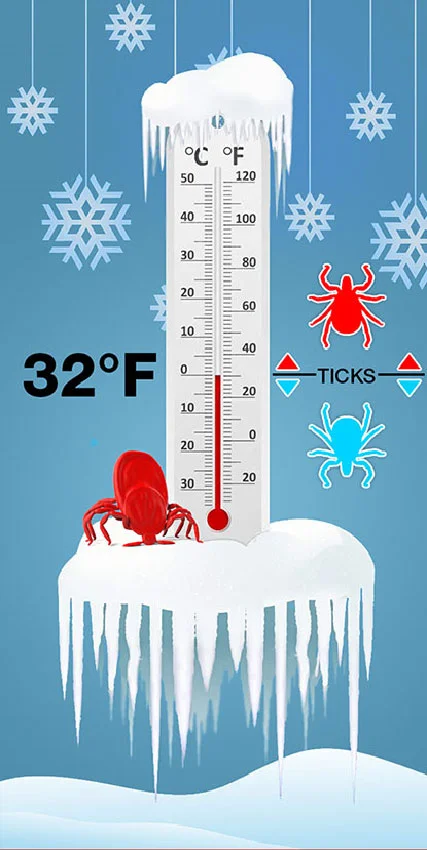Winter weather conditions play a crucial role in determining the abundance of ticks and mosquitoes in the northeast United States. A mild winter is expected to lead to a higher population of these pests, and this could pose serious health risks to residents. In this blog post, we will discuss the science behind the correlation between mild winters and an increased number of ticks and mosquitoes, and why it is important to be aware of this phenomenon.

Ticks are known carriers of Lyme disease and other illnesses that can be transmitted to humans through their bite. The presence of ticks in an area is influenced by various factors, including temperature and humidity. According to a study published in the Journal of Medical Entomology, ticks are known to be more active when temperatures are above freezing, and when humidity levels are relatively high. This is because ticks are ectothermic, meaning that their body temperature is regulated by the environment, and high humidity levels allow them to remain hydrated.
Similarly, mosquitoes, which are known carriers of West Nile Virus and other diseases, are also influenced by temperature and humidity. A study published in the Journal of Medical Entomology found that mosquitoes are most active when temperatures are between 60°F and 80°F, and when humidity levels are relatively high.
A mild winter is expected to result in higher temperatures and humidity levels in the northeast United States, which could lead to an increased population of ticks and mosquitoes. According to the National Pest Management Association, warmer winter temperatures allow ticks and mosquitoes to remain active throughout the winter, and can even result in an earlier start to their breeding season. This could lead to a higher population of these pests in the spring and summer, which is when they are most likely to come into contact with humans.
It is important to note that a mild winter is not the only factor that contributes to the abundance of ticks and mosquitoes. Other factors such as rainfall and the availability of food sources also play a role. However, a mild winter is expected to have a significant impact on the population of these pests in the northeast United States, and residents should be aware of the potential health risks that they may pose.
In conclusion, a mild winter in the northeast United States is expected to result in a higher population of ticks and mosquitoes. These pests are known carriers of Lyme disease and other illnesses, and residents should take steps to protect themselves from their bites. By being aware of the science behind the correlation between mild winters and an increased number of ticks and mosquitoes, residents can take the necessary precautions to stay safe and healthy.
Sources:
National Pest Management Association. (n.d.). The Impact of Winter Weather on Pest Populations. Retrieved from https://www.pestworld.org/news-hub/pest-articles/the-impact-of-winter-weather-on-pest-populations/
Journal of Medical Entomology. (2017). Environmental Factors Affecting the Abundance and Activity of Ticks (Acari: Ixodidae). Retrieved from https://academic.oup.com/jme/article/54/1/1/4566560
Journal of Medical Entomology. (2015). Environmental Factors Affecting the Activity of Mosquitoes (Diptera: Culicidae). Retrieved from https://academic.oup.com/jme/article/52/2/251/731556

